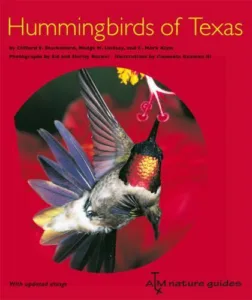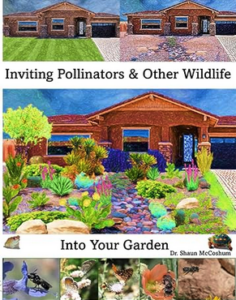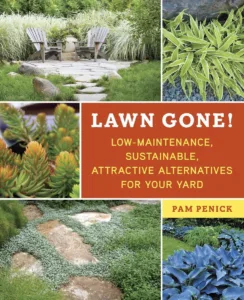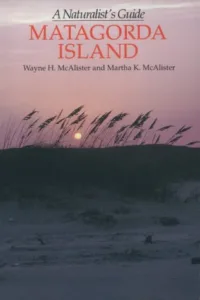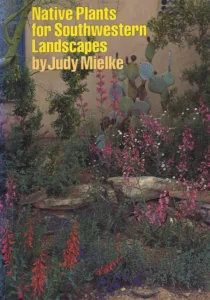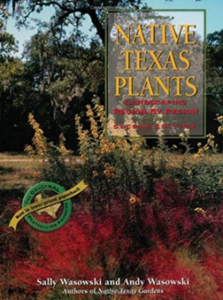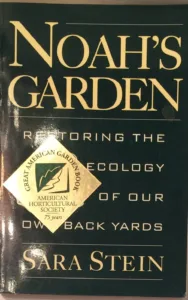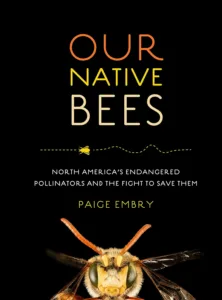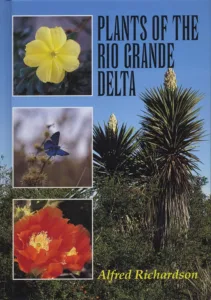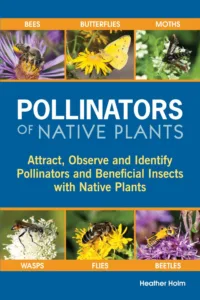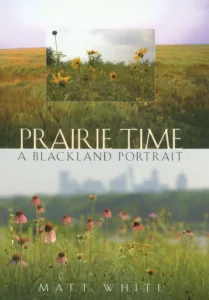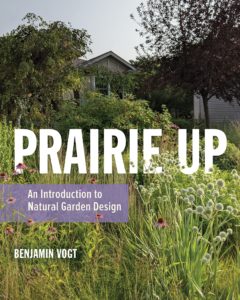
Over the decades, members have suggested books to one another. The list below includes publications that cover a variety of topics that our members find interesting and useful. However, the books below have not been reviewed and may include some non-native plant resources.
You can support the Native Plant Society by purchasing on our Bookstore.
To recommend a book for this list, contact your chapter webmaster.
Brian Loflin, Shirley Loflin
This book is a field guide that provides an illustrated overview of the most significant common grasses growing in the Texas Hill Country The guide catalogs over 170 species of hellip
Read Review...
Robert B. Shaw
Robert B Shaw and the team at Texas A amp M University Institute of Renewable Natural Resources provide an indispensable reference to the world s most economically important plant family
Read Review...
Edward O. Wilson
This book is a book written by Edward O Wilson a biologist and environmental advocate The book discusses the threat of mass extinction known as the Sixth Extinction taking place hellip
Read Review...
Jim Stanley
This book is a collection of essays that describe the ecology of the Texas Hill Country including the native habitat the land the water the plants the animals the people hellip
Read Review...
Jim Stanley
In this invaluable book Jim Stanley charts a practical course for understanding and handling a variety of problems that both new and established landowners in the Texas Hill Country will hellip
Read Review...
Jill Nokes
This book provides practical information about growing native plants in Texas and the Southwest It offers strategies for making and maintaining a diverse layered landscape that provides outdoor rooms and hellip
Read Review...
Marcy Scott
120 plant profiles with detailed information on their significance to hummingbirds
Read Review...
Clifford E. Shackelford, Madge M. Lindsay, C. Mark Klym
Written for a general audience with spectacular images for birders and nature enthusiasts at every level Hummingbirds of Texas reveals the enormous appeal of this tiniest and shiniest of birds hellip
Read Review...
John Alcock
This book is about the author 8217 s personal laboratory for ecological studies which he created by replacing the Bermuda grass in his suburban Arizona lawn with gravel cacti and fairy dusters hellip
Read Review...
Eric Grissell
This book is about the role of insects in garden ecology and how they can be beneficial to the garden ecosystem Grissell suggests that it might be time to declare hellip
Read Review...
Sylvan Ramsey Kaufman, Wallace Kaufman
This book provides a comprehensive guide to identifying and understanding the plants that are changing the North American landscape forever The book features full color photos and descriptions of more than hellip
Read Review...
Shaun Michael McCoshum
Inviting Pollinators and Other Wildlife Into Your Garden is not only a how to on building natural habitats for native wildlife but is also a complete guide Readers new to native hellip
Read Review...
Warren Jones, Charles Sacamano
This book is a definitive guide to landscaping in the Southwest featuring exotic plants of tremendous potential seldom used in Southwest landscapes The book contains full color photos and descriptions of hellip
Read Review...
George Oxford Miller
In this comprehensive richly illustrated guide author George Oxford Miller provides the 8220 how to 8221 8220 when to 8221 and 8220 what to 8221 for gardeners landscapers and homeowners throughout Texas Have you ever planted a beautiful and expensive shrub hellip
Read Review...
Richard Louv
In this work Louv highlights the declining exposure of children to nature in American society coining the term 8220 nature deficit disorder 8221 He delves into how this lack of connection with the hellip
Read Review...
Pam Penick
In this book Penick explores innovative ways to transform traditional lawns into more eco friendly low maintenance landscapes Here are the key points from the book Whether you 8217 re a seasoned gardener or hellip
Read Review...
Donovan Stewart Correll, Marshall Conring Johnston
This book is a comprehensive guide to the vascular plants of Texas It includes detailed descriptions and illustrations of over 5 000 species of plants as well as information on their hellip
Read Review...
Roy L. Lehman
Veteran botanist and educator Roy L Lehman describes Texas marine plants in four major sections common shoreline plants seagrasses mangroves and marine algae red brown and green seaweeds Each section hellip
Read Review...
Wayne H. McAlister
This book is a comprehensive exploration of Matagorda Island one of the barrier islands along the Texas coastline The book sheds light on the island 8217 s natural wealth and ecological fragility hellip
Read Review...
Texas AgriLife Extension and the City of Austin
This Grow Green guide was created to help you select plants that are native to and adapted for the Austin area These plants tend to be drought tolerant most need hellip
Read Review...
Jim Weber, Lynne M. Weber, and Roland H. Wauer
This user friendly heavily illustrated field guide describes 101 native larval host plants in Texas Each plant species includes descriptive information on the plant a distribution map and photos of both hellip
Read Review...
Lynne M. Weber and Jim Weber
Like butterflies moths require native plant species in order to lay their eggs and feed the caterpillar stage This user friendly follow up to Lynne and Jim Weber s Native Host Plants for hellip
Read Review...
Haeley Giambalvo
You ll learn how with native plants it s possible to achieve a beautiful yard without the need to overhaul your entire landscaping sacrifice your aesthetic or remove all your grass You hellip
Read Review...
Judy Mielke
For gardeners who want to conserve water the color fragrance shade and lush vegetation of a traditional garden may seem like a mirage in the desert But such gardens can hellip
Read Review...
Michael Powell, Shirley Powell
In this insightful guide the focus is on the unique flora of Trans Pecos Texas an arid and rugged region known for its challenging climate The authors delve into the remarkable hellip
Read Review...
Sally Wasowski and Andy Wasowski
This time proven classic explores 600 gardens that make the most of the Lone Star State s home grown native greenery
Read Review...
Sally Wasowski and Andy Wasowski
Landscape designs for every ecoregion and terrain found across Texas
Read Review...
Lynne M. Weber, Jim Weber
With clarity and depth of knowledge Naturalist s Austin A Guide to the Plants and Animals of Central Texas provides a tour that includes nearly 700 species of plants and animals hellip
Read Review...
Douglas W. Tallamy
Nature s Best Hope shows how homeowners everywhere can turn their yards into conservation corridors that provide wildlife habitats Because this approach relies on the initiatives of private individuals it is hellip
Read Review...
Sarah L. Thomson and Douglas W. Tallamy
This middle grade edition of the groundbreaking bestseller by Doug Tallamy will inspire kids to use their backyard to help save the planet
Read Review...
Sara Stein
This book shows us how our landscape style of neat yards and gardens has devastated suburban ecology wiping out entire communities of plants and animals by stripping bare their habitats hellip
Read Review...
James H. Miller, Erwin B. Chambliss
This book provides information on accurate identification and effective control of the 33 nonnative plants and groups that are currently invading the forests of the 13 Southern States showing both hellip
Read Review...
Mary Curry
Over 340 species in full color with close ups of leaves and flowers details in bulleted format for field identification soil types in which to find the plant bloom times common hellip
Read Review...
Paige Embry
Honey bees get all the press but the fascinating story of North America s native bees endangered species essential to our ecosystems and food supplies is just as crucial Through interviews with farmers hellip
Read Review...
Thomas Rainer, Claudia West
Over time with industrialization and urban sprawl we have driven nature out of our neighborhoods and cities But we can invite it back by designing landscapes that look and function hellip
Read Review...
Alfred Richardson
This book provides an accessible and reliable identification guide to all of the plants excluding grasses of the region some 823 species In clear nontechnical language Alfred Richardson gives a brief hellip
Read Review...
Roy L. Lehman
For everyone who studies or simply enjoys the impressive variety of wild plants that grow in the counties of Texas 8217 coastal bend here is an authoritative user friendly book that will hellip
Read Review...
Heather Holm
This is is the first comprehensive book to illustrate the specific relationships between native pollinators and native plants Organized by plant communities the book profiles over 65 perennial native plants hellip
Read Review...
Matt White
In its most extensive prime the Texas Blackland Prairie formed a twelve million acre grassy swath across the state from near San Antonio north to the Red River Perhaps less than one hellip
Read Review...
Benjamin Vogt
This approachable introduction to prairies is an accessible and inspirational guide to garden design for those wanting sustainable beautiful and functional landscapes
Read Review...
| Title | Author | Summary |
|---|---|---|
| The Nature of Oaks: The Rich Ecology of Our Most Essential Native Trees | Douglas W. Tallamy | The Nature of Oaks reveals what is going on in oak trees month by month, highlighting the seasonal cycles of life, death, and renewal. |
| Nature's Best Hope | Douglas W. Tallamy | Nature's Best Hope shows how homeowners everywhere can turn their yards into conservation corridors that provide wildlife habitats. |
| Gardening With Prairie Plants: How To Create Beautiful Native Landscapes | Sally Wasowski and Andy Wasowski | Filled with practical advice and detailed information, this indispensable guide to prairie gardening shows readers how to choose space, plan a garden, select plants and flowers, and much more. |
| 100 Texas Wildflowers | Dorothy Barid Mattiza | Identifies 100 of the most conspicuous wildflower species native to Texas, keyed to the regions where each may be found. Photos by members of the Native Plant Society of Texas. |
| A Beginner’s Handbook for Rural Texas Landowners | Jim Stanley | The subtitle spells it out: ” How to Live in the Country Without Spoiling It.” This new book is the perfect introduction for small landowners wanting to be good stewards of their piece of the Hill Country. As the title says, it’s a place to begin and a perfect lead-in to Stanley’s earlier book (above) which contains more specifics. |
| A Field Guide to Common South Texas Shrubs | Taylor, Richard B., Jimmy Rutledge, and Joe G. Herrera | |
| A Field Guide to Texas Trees | Benny Simpson | |
| A Management Guide for Invasive Plants in Southern Forests | Manning, Steven T. | |
| A Sand County Almanac with Other Essays on Conservation from Round River | Aldo Leopold | |
| Agaves, Yuccas, and Related Plants: A Gardener’s Guide | Irish, Mary and Gary | |
| Aquatic & Wetland Plants of the Western Gulf Coast | Stutzenbaker, Charles D. | |
| Aransas, A Naturalist’s Guide | McAlister & McAlister | |
| Atlas of the Vascular Plants of Texas | Billie Lee Turner, Holly Nichols, Geoffrey C. Denny, and Oded Doron | |
| Attracting and Feeding Hummingbirds | Williamson, Sheri | |
| Attracting Birds to Southern Gardens | Pope, Odenwald, Fryling | |
| Attracting Birds, Butterflies & other Backyard Wildlife | Mizejewski, David | |
| Attracting Native Pollinators: Protecting North America’s Bees and Butterflies: the Xerces Society Guide | Eric Lee-Mäder | |
| Bringing Nature Home | Douglas W. Tallamy | |
| Bringing Nature Home: How Native Plants Sustain Wildlife in Our Gardens | Douglas W. Tallamy | Everyone with access to a patch of earth can make a significant contribution toward sustaining biodiversity by simply choosing native plants. |
| Brush and Weeds of Texas Rangelands | Hart, Charles R., Barron S. Rector, et al | |
| Building Inside Nature’s Envelope | Sally Wasowski and Andy Wasowski | |
| Bumble Bees of North America: An Identification Guide | Paul Williams, Robbin Thorp, Leif Richardson and Sheila Colla | |
| Butterfly Gardening for Texas | Geyata Ajilvsgi | |
| Butterfly Gardening for the South | Geyata Ajilvsgi | |
| Butterflies of Houston and Southeast Texas | John and Gloria Tveten | |
| Cacti of Texas and Neighboring States | Del Weniger | Field Guide |
| Central Region Seedling ID Guide for Native Prairie Plants | NRCS, US Department of Agriculture | Small spiral bound laminated field guide for identifying Native Prairie Plants of the Central Region of the US. |
| Butterflies through Binoculars: The West | Jeffrey Glassberg | |
| Common Texas Grasses: An Illustrated Guide (Volume 3) | Frank W. Gould and Stephan L. Hatch | Field Guide |
| Doug Welsh’s Texas Garden Almanac | Doug Welsh | |
| Edwards Plateau Vegetation | Bonnie B. Amos and Frederick R. Gehlbach | |
| Explorers’ Texas: The Lands and Waters | Del Weniger | |
| A Field Guide for the Identification of Invasive Plants in Southern Forests | James H. Miller, Erwin B. Chambliss, and Nancy J. Loewenstein | This book provides information on accurate identification of the 56 nonnative plants and groups that are currently invading the forests of the 13 Southern States, including Texas. It lists other nonnative plants of growing concern, covering trees, shrubs, vines, grasses, ferns, and forbs. |
| Field Guide to Common Texas Grasses | Stephen L. Hatch, Kelly C. Umphres & A. Jenet Ardoin | |
| Field Guide to Broad-leaved Herbaceous Plants of South Texas | Everitt, James H., D. Lynn Drawe, Robert I. Lonard | |
| Field Guide to Common South Texas Shrubs | Taylor, Rutledge, Herrera | |
| Fruitless Fall: The Collapse of the Honey Bee and the Coming Agricultural Crisis | Rowan Jacobsen | Rowan Jacobsen uses the mystery of Colony Collapse Disorder to tell the bigger story of bees and their' essential connection to our daily lives. |
| Grasses of Southern Oklahoma and North Texas: a Pictorial Guide | Russell Stevens & Chuck Coffey with the Samuel Roberts Noble Foundation | |
| Fruitless Fall: the Collapse of the Honey Bee and the Coming Agricultural Crisis | Rowan Jacobsen | |
| Grasses of South Texas: A Guide to Identification and Value | Everitt, James H., D. Lynn Drawe, Christopher, R. Little, Robert I. Lonard | |
| Grasses of the Texas Hill Country | Brian Loflin and Shirley Loflin | This photographic guide to grasses gives all who have been frustrated trying to identify these difficult plants an easy-to-use, visually precise, and information-packed field guide to seventy-seven native and introduced species that grow in the Texas Hill Country and beyond. With a blade of grass in hand, open this book and find: Handy thumb guides to seedhead type, the most visible distinguishing characteristic to begin identification. Color photographs of stands of grasses and detailed close-ups. Concise information about economic uses, habitat, range, and flowering season. Quick-reference icons. |
| Guide to Texas Grasses | Shaw, Robert B | |
| Half Earth: Our Planets Fight for Life | E.O. Wilson, Liveright | |
| Hill Country Ecology; Essays on Plants, Animals, Water, and Land Management | Jim Stanley | In this book, Dr. Stanley, a knowledgeable naturalist of Hill Country issues, addresses a wide range of topics of interest and concern to residents of the Texas Hill Country. |
| Hill Country Landowner’s Guide | Jim Stanley | In this invaluable book, Jim Stanley charts a practical course for understanding and handling a variety of problems that both new and established landowners in the Texas Hill Country will confront—from brush control, grazing, and overpopulation of deer to erosion, fire, and management of exotic animals and plants. |
| How to Grow Native Plants of Texas & the Southwest | Nokes, Jill, Kathryn Miller Brown | |
| How to Grow Native Plants of Texas and the Southwest, Revised & Updated | Jill Nokes | How to Grow Native Plants of Texas and the Southwest has set the standard for both home and professional gardeners. In addition to the individual plant descriptions, Jill Nokes also devotes whole chapters to gathering and storing seeds, seed germination, planting, vegetative propagation, and transplanting. |
| Hummingbirds of Texas | Klym, Mark; Shackelford, Clifford E.; Lindsay, Madge M | |
| Identification of Milkweeds in Texas | Singhurst, Jason, Ben Hutchins, and Walter C. Holmes | |
| In a Desert Garden: Love and DFeath Among the Insects | John Alcock | |
| Insects and Gardens: In Pursuit of a Garden Ecology | Eric Grissell | With a sound basis in science and a practical grounding in gardening experience, Grissell introduces the reader to the role of insects in garden ecology. |
| Invasive Plants: Guide to Identification and the Impacts and Control of Common North American Species | Kaufman and Kaufman | |
| Landscape Plants for Dry Regions | Warren Jones and Charles Sacamano | |
| Landscaping Revolution: Garden with Mother Nature, Not Against Her | Sally Wasowski and Andy Wasowski | |
| Landscaping with Native Texas Plants | Sally Wasowski and Julie Ryan | |
| Landscaping with Native Plants of Texas | George Oxford Miller | In this comprehensive, richly illustrated guide, author George Oxford Miller provides the "how-to," "when-to," and "what-to" for gardeners, landscapers, and homeowners throughout Texas. |
| Landscaping with Native Plants of Texas & the Southwest | Miller, George O | |
| Last Child in the Woods:Saving our Children from Nature-Deficit Disorder | Ruchard Louv | |
| Lawn Gone! Low-Maintenance, Sustainable, Attractive Alternatives for Your Yard | Penick, Pam | |
| Life on a Little Known Plant: A Biologist’s View of Insects and Their World | Howard Ensign Evans | |
| Manual of the Vascular Plants of Texas | Correll and Johnston | |
| Matagorda Island, A Naturalist’s Guide | McAlister & McAlister | |
| Native and Adapted Landscape Plants: an Earthwise Guide for Central Texas | Texas AgriLife Extension, City of Austin | |
| Native & Naturalized Woody Plants of Austin and the Hill Country | Brother Daniel Lynch | Field Guide |
| Native Host Plants for Texas Butterflies: A Field Guide | Jim Weber, Lynne M. Weber, Roland H. Wauer | |
| Native Host Plants for Texas Moths: A Field Guide | Jim Weber, Lynne M. Weber, Roland H. Wauer | |
| Native Perennials for the Southeast | H. Peter Loewer | |
| Native Plant Gardening for Beginners | Haeley Giambalvo | It is easy to do with native plants! Native Plant Gardening for Beginners is your QUICK START GUIDE to making your native plant garden a REALITY! |
| Native Plants in Landscaping: Trees, Shrubs, Cacti and Grasses of the Texas Desert and Mountains | Michael and Shirley A. Powell | The only book on ornamental plants dedicated to the remarkably cold-hardy and arid-adapted native species of Trans-Pecos Texas. The potential of these trees, shrubs, succulents, cacti, and grasses for use in the landscape, both within and beyond the borders of their native habitats, has been only superficially tapped. |
| Native Texas Gardens: Maximum Beauty, Minimum Upkeep | Sally Wasowski and Andy Wasowski | |
| Native Texas Plants: Landscaping Region by Region, 2nd Edition | Sally Wasowski and Andy Wasowski | This is one of the first gardening and landscaping guides to feature native plants. One of the first books to get after moving to Texas, for those of us who were part of the problem on arrival, and seek instead to be part of the solution. |
| Nature’s Best Hope: A New Approach to Conservation that Starts in Your Yard | Doug Tallamy | |
| Nature’s Best Hope (Young Readers’ Edition): A New Approach to Conservation that Starts in Your Yard | Doug Tallamy | |
| A Naturalist’s Guide to theTexas Hill Country | Mark Gustafson | an overview of the plants, animals, geography, geology and history of the Hill Country. Especially good for newcomers to the world of nature in the Hill Country. |
| Noah’s Garden: Restoring the Ecology of Our Own Back Yards | Sara Stein | When Stein realized what her intensive efforts at making a traditional garden had done, she set out to "ungarden." Her book interweaves an account of her efforts with an explanation of the ecology of gardens. |
| Nonnative Invasive Plants of Southern Forests: A Field Guide for Identification and Control | Miller, James H. | |
| North Central Texas Wildflowers: Field Guide | Mary Curry | |
| Our Native Bees: North America’s Endangered Pollinators and the Fight to Save Them | Paige Embry | |
| Plants of the Rio Grande Delta | Richardson | |
| Plants of the Texas Coastal Bend | Lehman, Roy L., Ruth O’Brien and Tammy White | |
| Pollinators of Native Plants: Attract, Observe and Identify Pollinators and Beneficial Insects with Native Plants | Heather N Holm | |
| Prairie Time, a Blackland Portrait | Matt White | |
| Range Plants of North Central Texas: a Land User’s Guide to Their Identification, Value and Management | Linex, Ricky J. | The plants covered in this very useful new book overlap considerably with our part of the Hill Country, making this a great addition to everyone’s plant identification library. Forbs, woody plants and grasses are covered with excellent pictures of the plants and seeds. Content includes description of the plants as well as their use, value and management in the native habitat. This book is published by the Natural Resources Conservation Service (NRCS) in Weatherford and may be purchased at many of their offices, including the one in Kerrville at 2104 Memorial Blvd. (830) 896-4911. |
| Rare Plants of Texas | Poole, Jackie; Carr, William; Price, Dana; Singhurst, Jason | |
| Roadside Flowers of Texas | Howard S. Irwin (Author), Mary Motz Wills (Painter | 295 pp., 64 pages of color illustrations. Paintings by Mary Motz Wills. Includes black and white illustrations of diagrams of the parts of a plant. Includes definition of botanical terms and index. |
| Native Plants for Southwestern Landscapes | Judy Mielke | |
| Remarkable Plants of Texas: Uncommon Accounts of Our Common Natives | Matt Warnock Turner | Matt Warnock Turner explores the little-known facts—be they archaeological, historical, material, medicinal, culinary, or cultural—behind our familiar botanical landscape. |
| Requiem for a Lawnmower | Sally Wasowski and Andy Wasowski | |
| Shinner's and Mahler’s Illustrated Flora of North Central Texas | Diggs, George M., Barney L. Lipscomb, and Robert J. O’Kennon | |
| Southwestern and Texas Wildflowers | Niehaul, Ripper and Savage | |
| Stokes Butterfly Book: The Complete Guide to Butterfly Gardening | Stokes, Donald & Lillian | |
| Stokes Hummingbird Book: The Complete Guide to Hummingbird Gardening | Stokes, Donald & Lillian | |
| The Weather-resilient Garden: A Defensive Approach to Planning and Landscaping | Charles W. G. Smith | |
| Texas Bug Book: The Good, the Bad, and the Ugly | Beck, Malcolm and Garrett, John Howard | |
| Texas Cacti | Texas A&M University Press | |
| Texas Gardening for the 21st Century: Planning, Constructing, Planting, Embellishing, and Maintaining Your Landscape | Simpson, Nan Booth, and Patricia Scott McHargue | |
| Texas Mushrooms: A Field Guide | Susan Metzler and Van Metzler | Field Guide |
| Texas Trees: A Friendly Guide | Paul W. Cox and Patty Leslie | An authoritative guide that shows the trees' relation to human and animal life -- even in the charming illustrations. Includes leaf-shape guide, range maps, and an index of popular and scientific names for over 120 trees, both native and naturalized. |
| Texas Wildflowers: A Field Guide | Loughmiller, Campbell and Lynn | Field Guide; 2018 edition has been completely reorganized by flower colors (and within each color section, by flowering season) to make it even easier to identify the flowers you see as you travel through Texas. Every wildflower is illustrated with a beautiful full-color photograph—over 250 of which are new to this edition. |
| Texas Wildflowers | Loughmiller, Campbell and Lynn | 1994 Clear and concise descriptions for more than 300 Texas Wildflowers. |
| Texas Wildscapes: Gardening for Wildlife | Noreen Damude and Kelly Conrad Bender | This book tells you how and what to plant to provide food and shelter for native wildlife. Most important, it does so by furnishing lists of plants appropriate to the specific region of Texas you live in. |
| Texas Wildscapes: Gardening for Wildlife | Bender, Kelly Conrad | Identifies the kinds of animals you can expect when you give them their three basic needs: food, water, and shelter. She then provides guidelines for designing and planting your yard or garden to best provide these requirements for the many birds, mammals, reptiles, amphibians, and invertebrates the environment will attract. This book is hard to find so keep your eyes open at garage sales and library book sales. Amazon does have an E-Textbook version available |
| Texas Wildscapes: Gardening for Wildlife | Noreen Damude & Kelly Conrad Bender | |
| The Bees in Your Backyard: A Guide to North America's Bees | Joseph S. Wilson, Olivia Messinger Carril | |
| The Drunken Botanist | Amy Stewart | |
| The Tallgrass Restoration Handbook: For Prairies, Savannas, and Woodlands | Stephen Packard (Editor), Cornelia F. Mutel (Editor) | |
| The Ferns and Lycophytes of Texas | George M. Ferns of TexasDiggs, Jr. and Barney L. Lipscomb | Texas has a surprising number of native ferns and lycophytes — 127 in all, the most of any state in the continental U.S.A. This is particularly unexpected given that most people associate ferns and related plants with humid, even tropical conditions, just the opposite of much of Texas. This book explains why and looks at the fascinating world of Texas ferns, ranging from the swamp forests of far East Texas, to the hidden canyons of the Edwards Plateau, and even to the high mountain “sky islands” of such places as Big Bend National Park. Each species has an illustration page with a color photo, a line drawing, and detailed maps. Be ready to be surprised by this special group of Texas plants! |
| The Garden Book Corpus Christi Area Garden Council, Inc. | ||
| The Living Landscape | Darke & Tallamy | |
| The Low-Water Flower Gardener | Eric A. Johnson and Scott Millard | |
| Trees of Central Texas | Vines, Robert A. | |
| Trees, Shrubs & Cacti of South Texas | Everitt, James H., D. Lynn Drawe, Robert I. Lonard | |
| Trees, Shrubs, and Vines of the Texas Hill Country | Jan Wrede | This is a field guide to more than 125 species of mostly native, mostly woody plants of the Texas Hill Country. A thoughtful introduction discusses deer, cedar, water, oak wilt, and invasive species. Plant descriptions contain information about the leaves, flowers, fruit, and bark of each plant and also give insights into the species’ range and habits. Especially useful is a comprehensive plant chart with tips about color, scent, flowering period, height, site preference, and wildlife and livestock utilization. A recommended reading list, a resource guide, and a glossary round out this information-packed book. With color photographs. |
| The Solitary Bees: Biology, Evolution, Conservation | Bryan Danforth, Robert Minckley and John Neff | |
| Useful Wild Plants of Texas | Scooter Cheatham and Marshall Johnston, with Lynn Marshall | |
| Vascular Plants of Texas | Correll & Johnston | |
| Wanted! Mountain Cedars, Dead or Alive | Elizabeth McGreevy | |
| Weeds in South Texas and Northern Mexico: A Guide to Identification | Everitt, James H., Robert I. Lonard, and Christopher R. Little | |
| Wicked Plants: The Weed that Killed Lincoln’s Mother and Other Botanical Atrocities | Amy Stewart | |
| Wild Edible Plants of Texas | Charles Kane | |
| Wild Orchids of Texas | Joe Liggio and Ann Orto Liggio | |
| Wildflowers of the Texas Hill Country | Marshall Enquist | |
| Wildflowers Across America | Lady Bird Johnson and Carlton B. Lees | |
| Wildflowers and Other Plants of Texas Beaches and Islands | Richardson, Alfred | |
| Wildflowers of Houston & Southeast Texas | Tveten, John & Gloria | |
| Wildflowers of Texas | Ajilvsgi, Geyata | Overview of 482 species of Texas wildflowers, grouped by flower color for easy identification. |
| Wildflowers of Texas | Michael Eason | Includes more than 1,100 commonly encountered species, both native and introduced. Organized by flower color, with helpful color coding along the page edges making it easy to navigate. |
| Wildflowers of the Texas Hill Country | Marshal Enquist | A comprehensive guide to the flora of the Hill Country, containing detailed descriptions and color illustrations of 427 species. Broad in scope, it covers everything from the smallest meadow flowers to the largest flowering trees and shrubs. |
| Your Remarkable Riparian | Steve Nelle & Nueces River Authority |








